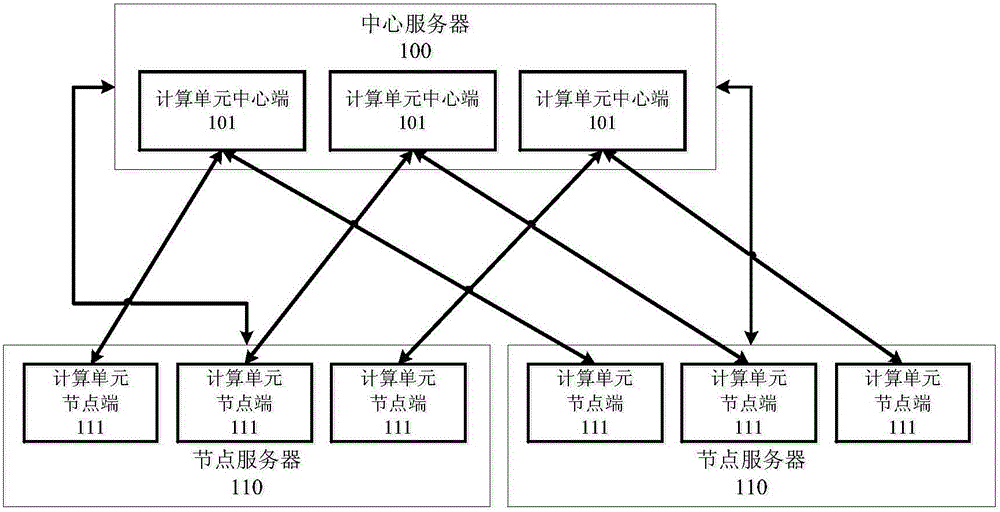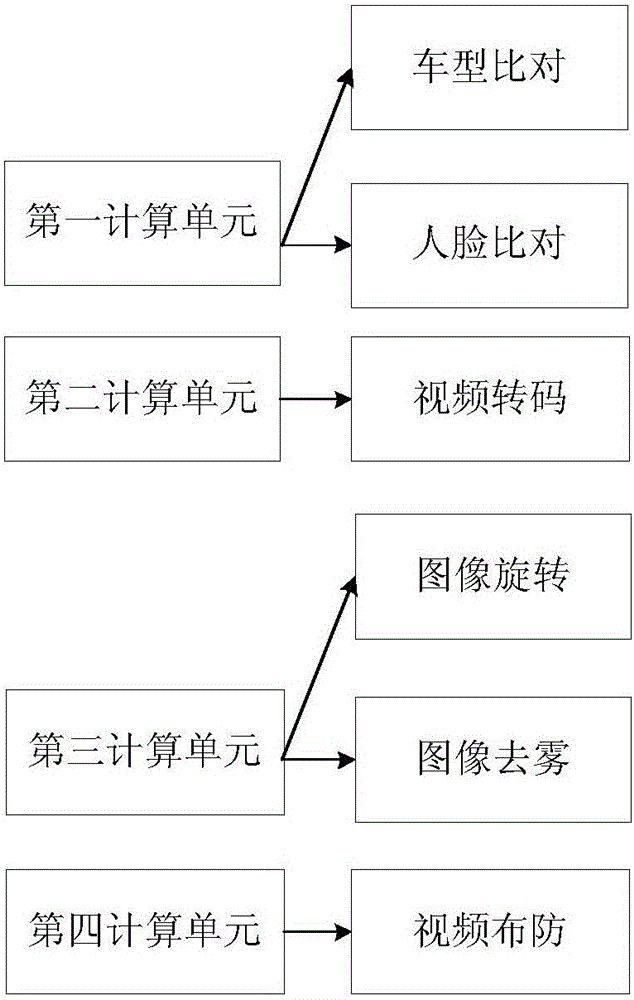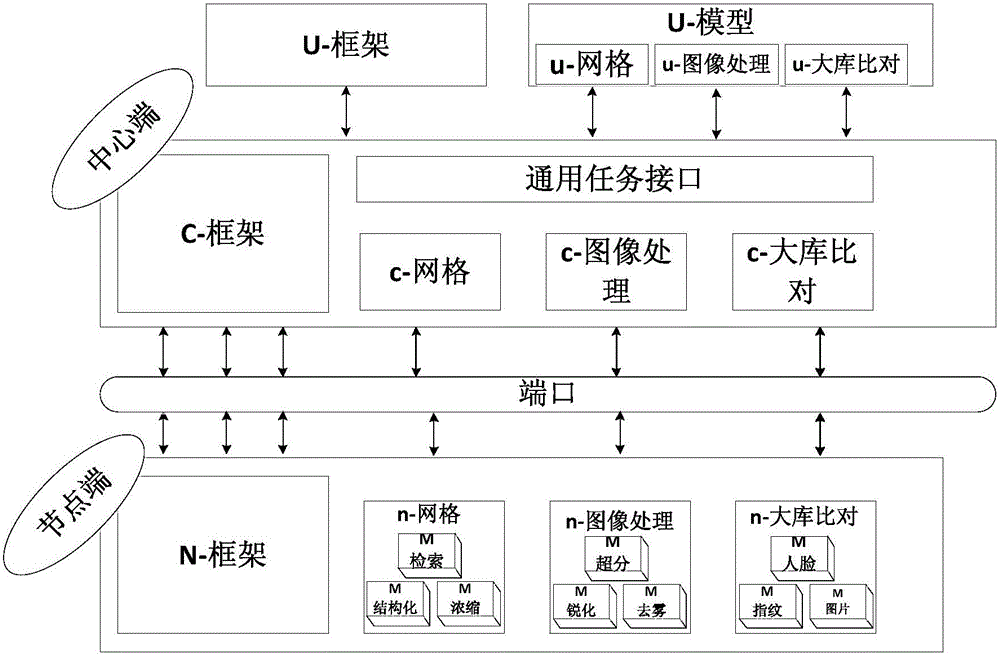Distributed computing resource allocation system and task processing method
A technology of distributed computing and resource allocation, applied in the field of distributed computing resource allocation system and task processing, can solve the problems of resource waste, different utilization rate of server clusters, and increased cost of server cluster construction.
- Summary
- Abstract
- Description
- Claims
- Application Information
AI Technical Summary
Problems solved by technology
Method used
Image
Examples
Embodiment 1
[0055] see figure 1 , the present embodiment provides a distributed computing resource allocation system, including: a central server 100 and a plurality of node servers 110, wherein the central server 100 is provided with computing unit central terminals 101 for different task types, and each node server 110 Computing unit node terminals 111 corresponding to the computing unit central terminal 101 are respectively provided, and the computing unit central terminal and the corresponding computing unit node terminals form a computing unit;
[0056] The central server 100 is used to receive the video image task sent by the user, and according to the type of the video image task, and the current task quantity and load situation of multiple node servers 110, distribute the video image task to the corresponding node server through the computing unit central terminal 101 110;
[0057] The node server 110 is configured to process the video image task through the computing unit node e...
Embodiment 2
[0100] see image 3 , this embodiment provides another distributed computing resource allocation system, which is expressed in the form of CUMN architecture. The distributed computing resource allocation system includes a center (Center), a user (User), a module (Module), a model (Model) And node (Node) 5 parts. Different business requirements will have different processing methods for data. This system uses models to define different calculation methods, which means modeling. For example, Hadoop uses the Map / Reduce computing model. The CUMN architecture stipulates that each computing model consists of one or several centers and several nodes. The models in the framework are "hot-swappable", and models can be added or deleted arbitrarily in the running state, which greatly improves the scalability and compatibility of the distributed computing resource allocation system.
[0101] The model is just a calculation method. What is the specific calculation? This solution defines...
Embodiment 3
[0133] see Figure 8 , this embodiment provides a task processing method, which can be implemented by the distributed computing resource allocation system in the above embodiment, and the task processing method includes the following steps:
[0134] Step 800, the central server receives the video image task sent by the user, and distributes the video image task to the corresponding node server through the central end of the computing unit according to the type of the video image task, and the current video image task quantity and load situation of multiple node servers ;
[0135] Step 802: After receiving the video image task, the node server processes the video image task through the computing unit node corresponding to the video image task.
[0136] In related technologies, the server that allocates tasks will receive different types of tasks sent by users through different interfaces according to the different task types of video image tasks received, so in the early devel...
PUM
 Login to View More
Login to View More Abstract
Description
Claims
Application Information
 Login to View More
Login to View More - R&D
- Intellectual Property
- Life Sciences
- Materials
- Tech Scout
- Unparalleled Data Quality
- Higher Quality Content
- 60% Fewer Hallucinations
Browse by: Latest US Patents, China's latest patents, Technical Efficacy Thesaurus, Application Domain, Technology Topic, Popular Technical Reports.
© 2025 PatSnap. All rights reserved.Legal|Privacy policy|Modern Slavery Act Transparency Statement|Sitemap|About US| Contact US: help@patsnap.com



